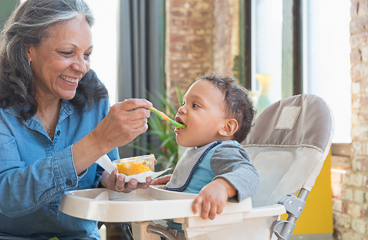Choking in Children: Care Instructions
Overview

Young children can easily choke on everyday objects and food. You can help prevent your child from choking by
offering the right kinds of foods, teaching your child safe eating habits, and keeping an eye out for choking
hazards.
Follow-up care is a key part of your child's treatment and safety. Be sure to make and go to all
appointments, and call your doctor if your child is having problems. It's also a good idea to know your
child's test results and keep a list of the medicines your child takes.
How can you care for your child at home?
-
Know how to select and prepare foods. For example, choose soft foods that can be cut up into small pieces,
such as cooked carrots. Avoid round, firm foods such as hot dogs, grapes, nuts, and raisins.
-
Make certain areas for eating, such as the kitchen table or dining room. Teach your child to sit down
while eating and to chew carefully.
-
Keep small objects out of your child's reach. In general, objects smaller than 1.25 inches in diameter and
2.25 inches long are choking hazards. Examples include coins, buttons, and bottle caps.
-
Do not allow your child to eat while walking, running, playing, or riding in a car. Never leave rubber
bands or deflated balloons around the house where children can reach them.
-
Do not allow young children to chew gum or eat hard candy.
-
Learn to recognize the signs of choking so you can react quickly. For example, a child who is choking
can't talk, cry, breathe, or cough.
When should you call for help?
 Call 911
anytime you think your child may need emergency care. For example, call if:
Call 911
anytime you think your child may need emergency care. For example, call if:
Call your doctor now or seek immediate medical care if:
Current as of: July 10, 2023
Content Version: 14.0
Care instructions adapted under license by your
healthcare professional. If you have questions about a medical condition or this instruction, always ask
your healthcare professional. Healthwise, Incorporated disclaims any warranty or liability for your use of
this information.